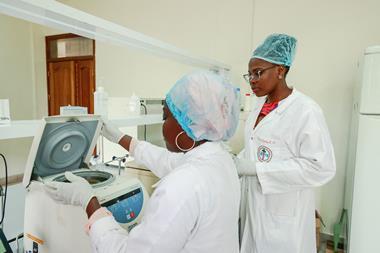Readers discuss chemistry degree uptake, isotope analysis best practice and green cosmetics
Changing away from chemistry
I’d like to thank Rebecca Trager for her excellent articles on the important subject of the changing status of chemistry departments. These articles, along with the publication of my research on degree attainment of various disciplines form a complementary study. Scientists interested in the future of Stem disciplines will find it helpful.
My interest in the statistics grew directly from my discussions with Rebecca comparing chemistry departments closing, merging or combining in the UK vs the US. She had the UK university names, and I had the US university names. My experiences with pre-med undergrads doing research with me led me to collect these statistics to explore possible reasons for these changes.
The students told me that they wanted to keep doing research with me, but they wanted to switch their [major] from chemistry to biology because the environment was better. I helped them process the necessary paperwork. It appeared to me that it was merely a case of chemistry losing its customers. Collecting these statistics could explore that, as well as answering ‘Where are the customers going?’ Degree attainment seemed a logical way to explore that.
I think the data (1997–2023) are sufficient to enable some analysis and predictions. Rebecca’s analysis in the article in the current issue of the magazine is good. I appreciate the third-party comments she obtained. They indicated an interest and a value for this work. However, in analysing the causes of the changes in chemistry, obviously recent events could not have impacted these data.
Because chemistry increases in both BS and PhD degree attainment were so small compared to biological sciences, it does seem plausible that students are switching majors, as I observed in my own department. I think of it as chemistry losing its customers.
My data are freely available at doi.org/10.1021/scimeetings.5c11304. I invite interested parties to download the PowerPoint file containing them. I hope they will inspire much discussion on this worthy topic. I can be contacted at djnelson@ou.edu or djnelson75.wixsite.com/mysite.
We can’t go back in time, but it is better to have a controlled descent than a crash landing; analysis will enable that. There are many other related topics which these data and the situation bring to mind, and I look forward to those.
Donna J Nelson FRSC
2016 American Chemical Society President
Mammoth lack of peer review
Recently, a colleague drew our attention to the article ‘Mammoth task of identifying legal ivory made simpler and cheaper by isotope analysis’. This was not because of the importance of new testing available to identify illegally trafficked ivory but because of the surprising lack of experimental detail in the original research article.
In 2022 the International Union of Pure and Applied Chemistry (Iupac) produced a technical report outlining the minimum requirements for publishing hydrogen, carbon, nitrogen, oxygen and sulfur stable-isotope delta results.
Two important requirements from this report are that at least two reference materials (of well characterised isotope-delta value) must be used to normalise results and that the assigned isotope-delta values for these materials and quality control materials must be reported.
Having spent time and effort working on this project it was sad that the authors of the article and the editorial staff and reviewers of Frontiers in Ecology and Evolution were apparently unaware of these requirements. It is also sad that Chemistry World did not appear to conduct any review before publicising this article.
The requirements in the Iupac technical report are intended to ensure that reported measurements are traceable to recognised standards and that data are, therefore, fit for the purpose of populating comparative databases. These requirements should be paramount in the fields of forensics and wildlife forensics. Authors, editors and reviewers are urged to become familiar with these guidelines before publishing (or publicising) stable-isotope based research.
James F Carter CChem FRSC
Philip Dunn MRSC
Under the skin of cosmetic chemistry
I was delighted to see Chemistry World dedicating space to cosmetics and consumer concerns about ingredients such as parabens and PFAS.
It is incredible to witness how mainstream chemical science publications are increasingly covering the cosmetic sector, reflecting the exponential growth in both ingredient exposure and public scrutiny. Consumers are becoming ever more vocal in their demand for safe, effective and natural products – and formulators must respond with science-based solutions.
Parabens have been the subject of debate for many years, and the body of literature questioning their safety continues to expand. Coincidentally, just this month a new study was published in Nature reporting on the transgenerational inheritance of diminished ovarian reserve in mice triggered by prenatal exposure to propylparaben. While the translation of such findings to human health is always complex, studies of this nature inevitably intensify consumer concern and regulatory attention.
Formulators are therefore faced with a dual challenge: ensuring microbiological safety while meeting the market demand for ‘free-from’ claims and green credentials. This is not an easy task, as the palette of approved preservatives is limited. Yet innovation is possible.
The answer increasingly lies in multifunctional ingredients designed through the lens of green chemistry. These are compounds that provide benefits beyond preservation – such as moisturisation, skin conditioning and antioxidant – while also exerting antimicrobial activity, allowing safer and more sustainable formulations.
Encouragingly, sourcing such solutions is becoming easier. Platforms such as my own GreenChemFinder are emerging to help formulators identify natural and multifunctional antimicrobial ingredients that align with principles of safety, sustainability and efficacy.
I believe that the future of cosmetic preservation will not rely on single-function preservatives, but on a systems approach rooted in green chemistry – a path that meets both consumer expectations and the scientific imperative for safety.
Barbara Olioso MRSC
Glastonbury, UK












No comments yet